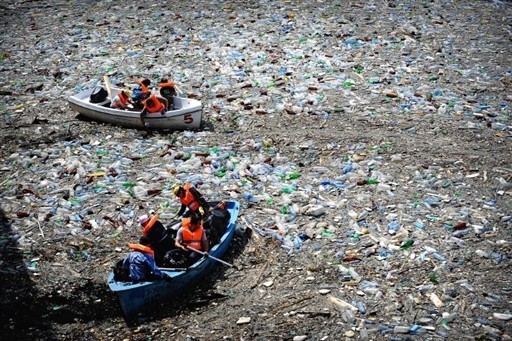Drowning in Debris
In most North American and European communities municipalities entreat their populations to recycle. And most people respond, assiduously separating plastics and papers to exclude them from normal household waste, setting them aside in special collection containers to be recycled by the municipality. Thus keeping landfills from absorbing items that can be repurposed and reused. And in the process making everyone feel a little better about the tremendous amounts of waste that we humans produce.On the other hand, research has shown that less than half of the 280 million tonnes of plastic produced globally on an annual basis ends up being recycled. Nor does it necessarily end up in a landfill site. A good proportion winds up as debris, scattered on land and on the seas, presenting as a hazard threatening both humans and wildlife, according to ecologists Chelsea Rochman, University of California and Mark Anthony Browne, at the U.S. National Centre for Ecological Analysis and Synthesis.
Five of their colleagues from Japan, Europe and the US. co-signed an industry-critical commentary published in the current issue of the journal Nature. Half of the world's marine animals, and one-fifth of its seabirds risk becoming entangled in plastic wrappers bottles and bags, some of which can also be eaten, harming them internally. By 2050, they argue, so many billions of tonnes of plastic can be tossed that 2.75-billion garbage trucks could wrap around the planet 800 times, end to end.
The United Nations-sponsored Convention on Biological Diversity last year reported that all sea turtle species and 45% of marine mammal species, along with 21% of seabirds are susceptible to harm by eating or becoming entangled in plastic waste. Plastic degrading into small pieces get into creatures' stomachs, while 'microplastic' along with some of their chemical components invade cells and tissues.
"Pesticides and organic pollutants such as polychlorinated biphenyls are consistently found on plastic waste at harmful concentrations 100 times those found in sediments and one million times those occurring in sea water. We believe that manufacturers of plastic, along with the food and textile industries that rely heavily on it, should have to prove that their products and packaging are safe", insist the researchers.
The four most problematical plastics -- PVC, polystyrene, polyurethane and polycarbonate -- that together represent 30% of global production are made of "potentially toxic materials", used in construction (water pipes); food packaging, furniture and electronics. The researchers would like to see regulation imposed representing a "closed-loop system", where all such plastics are reused and recycled.
A spokesperson at the American Chemistry Council, Washington, says there is agreement among the manufacturers of plastic, "that litter doesn't belong in our oceans, waterways or any part of our natural environment." However, he also stated "the suggestions by the commenters in the journal Nature are neither justified nor helpful. Plastics makers agree more research is needed".
How much more research will satisfy the producers of plastics, regulatory agencies and consumers?
BULGARIA, Krichim : Volunteers try to clear a dam which is
filled with discarded plastic bottles and other garbage,
blocking Vacha Dam, near the town of Krichim on April 25, 2009. AFP
PHOTO / DIMITAR DILKOFF
Labels: Crisis Politics, Environment, Health, Nature


0 Comments:
Post a Comment
<< Home